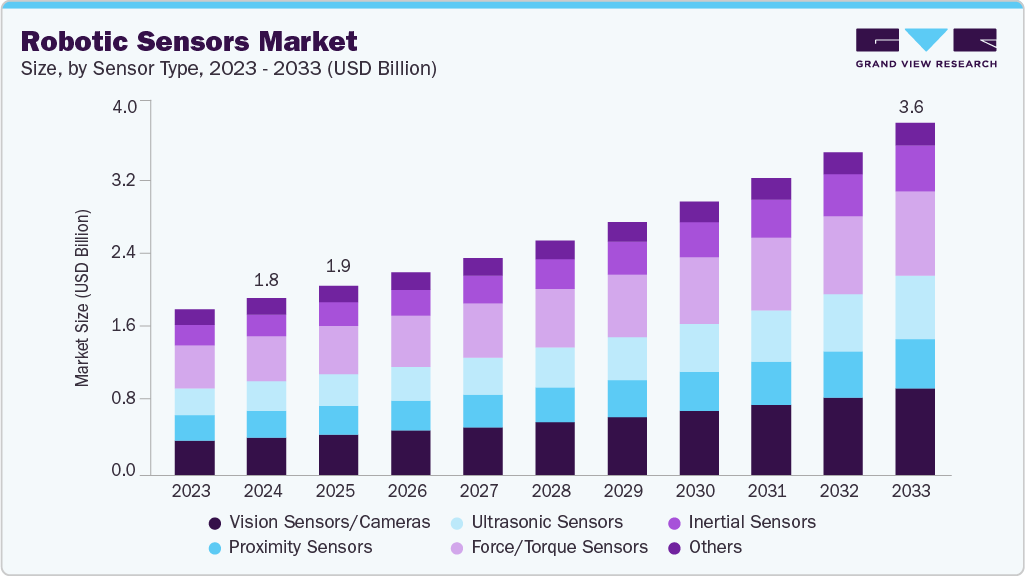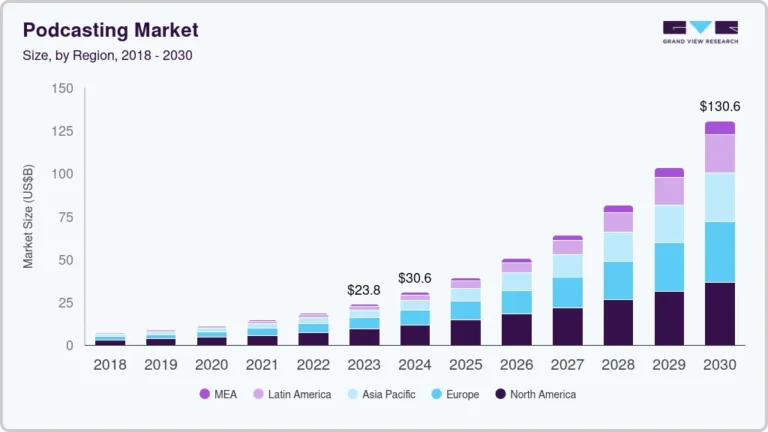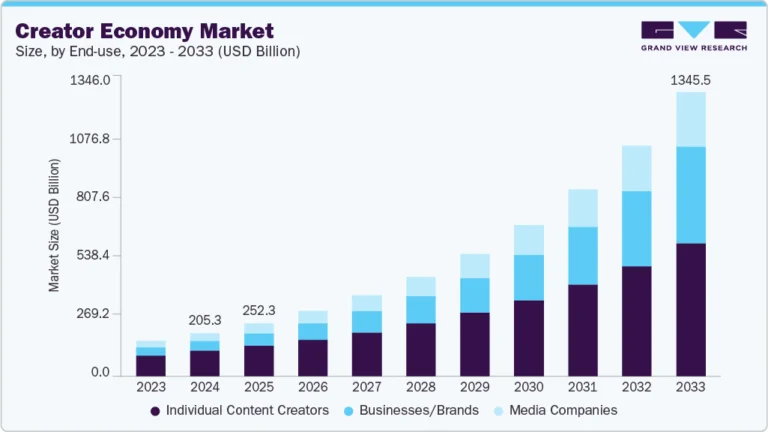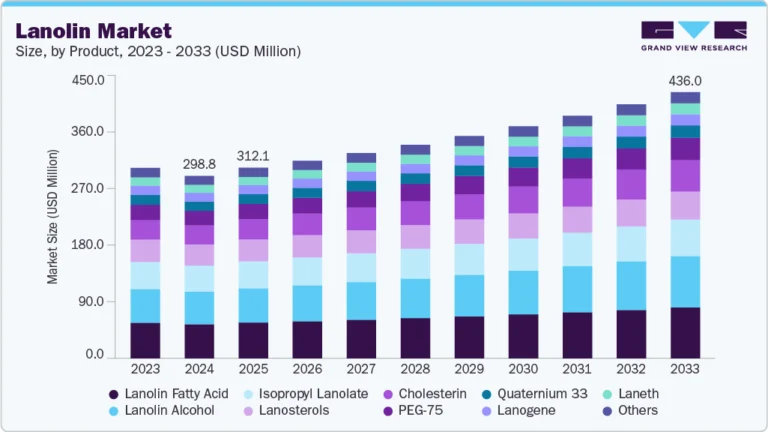Robotic Sensors Market Size, Share & Trends Analysis growing at a CAGR of 8.1% from 2025 to 2033

The global robotic sensors market size was estimated at USD 1,819.4 million in 2024 and is projected to reach USD 3,625.8 million by 2033, growing at a CAGR of 8.1% from 2025 to 2033. This growth is primarily driven by the rising adoption of automation across industrial sectors, along with the increasing deployment of autonomous mobile robots (AMRs) and collaborative robots (cobots) for tasks ranging from logistics and inspection to precision manufacturing and safety monitoring.
Key Market Trends & Insights
- Asia Pacific dominated the global robotic sensors market with the largest revenue share of 50% in 2024.
- The robotic sensors market in the China led the Asia Pacific market and held the largest revenue share in 2024.
- By sensor type, force/torque sensors led the market and held the largest revenue share of 25.7% in 2024.
- By application, navigation & mapping segments held the dominant position in the market and accounted for the leading revenue share of 23.7% in 2024.
Market Size & Forecast
- 2024 Market Size: USD 1,819.4 Million
- 2033 Projected Market Size: USD 3,625.8 Million
- CAGR (2025-2033): 8.1%
- Asia Pacific: Largest market in 2024
Request a free sample copy or view report summary: https://www.grandviewresearch.com/industry-analysis/robotic-sensors-market-report/request/rs1
The global robotic sensors market is experiencing significant growth, largely driven by the increasing adoption of industrial automation and the widespread influence of Industry 4.0. Industries are progressively integrating robots to improve efficiency, precision, and overall productivity in manufacturing, logistics, and healthcare sectors. This demand is further bolstered by advancements in sensor technologies, such as LiDAR, ultrasonic, and tactile sensors, which are becoming more sophisticated, compact, and cost-effective. The rising focus on workplace safety and the necessity for high-quality, precise operations across various applications also act as important market drivers.
A key trend in the global robotic sensors market is the growing integration of Artificial Intelligence (AI) with robotic systems. AI algorithms are transforming how sensors process data, allowing robots to interpret complex environmental cues, recognize patterns, and make autonomous, real-time decisions. This synergy is crucial for applications ranging from autonomous vehicles and drones to advanced smart robotics, enabling machines to adapt to dynamic environments with unprecedented intelligence and flexibility. This development significantly enhances robot functionality and broadens their applicability across new domains.
Another notable trend influencing the market is the increasing demand for collaborative robots (cobots) and the convergence of the Internet of Things (IoT) with robotic sensors. Cobots are designed to work safely alongside humans and rely heavily on advanced sensors for accurate human-robot interaction and collision avoidance. In addition, the integration of IoT connectivity enables seamless data sharing and remote monitoring of robotic systems, leading to predictive maintenance and optimized performance. The emphasis on sustainability and energy efficiency in sensor design is also gaining importance, aligning with global environmental goals.






